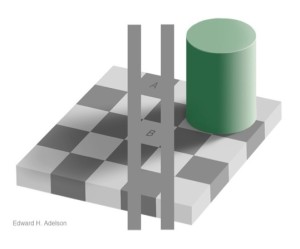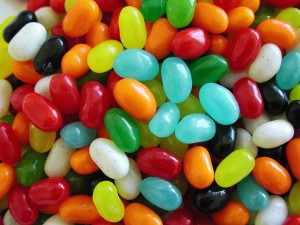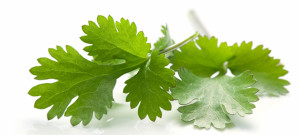I’m sure we’ve all seen the adorable puppies around campus in their purple vests. These are Susquehanna Service Dogs, and while some are training to be therapy dogs for hospital patients, some, after more training, will serve as seeing eye dogs. And while these animals can make an individual who is blind more independent, there is also been a technology developed can that can help blind and visually people “see” without using their eyes.
The idea for this actually stems back to the 1960’s, where Dr. Paul Bach-y-Rita was working on the idea of “sensory substation”- the concept that if you stimulate one sense, such as touch, it could take the place of another, such as sight.

(sorry that the photo is a little blurry, it was the only one I could find)
Back in 2009, neuroscientists from Wibcab. Inc. developed the pieces to put this apparatus together, known as a BrainPort. It starts with a small camera that is embedded in sunglasses worn by the user. The camera is connected, as you can see from the photo, to a “base unit” that the user holds in his/her hand. The main component of this base unit is a mini Central Processing Unit CPU), which is able to convert digital signals from the camera into electrical signals: this is what the retina does is someone who is not visually impaired. The base unit is also home to features such as adjustable shock intensity, zoom control, and light settings.
The electrical signals, once converted in base unit by the CPA, are sent to, you guessed it, the tongue (the pictures providing hint aplenty). On the tongue is a 3 cm by 3 cm arrangement of electrodes that contain a number of densely packed pixels. White pixels indicates a strong electrical signal, and black pixels indicate no signal.
What does it feel like to experience a “signal” on the tongue? The user describes it as “pop-rock” like feeling or champagne bubbles popping.

This helps creates an “experience of vision” when the person stands and the camera send what’s there in front of them, in the most basic of spatial information, digitally to the base unit. The basic workings is this: if the person who has this device is standing in front of a dark hallway with a lights in the center, the electrical impulses will fire in the middle of the tongue.
If you’re thinking interpreting this information on the tongue might seem weird and hard to do, you’re right- at first. A neuroscientist from Wibcab, Aimee Arnoldnussen says, “It becomes a task of learning, no different than riding a bike…[the] process is similar to how a baby learns to see. Things may be strange at first, but over time they become familiar.”
So why use the tongue?
Surely there are larger surfaces on the human body where this pad can be placed, such as the back of the leg, or the stomach. The answer lies in the concentration of nerves in the tongue. One of my favorite parts of the Franklin Institute I remember is they had a table on pixel resolution.
The idea was you had a board with a few really large pegs so you really couldn’t tell the shape of your hand, a board with a more pegs so you could start to see it, and then finally a board with hundreds of really small pegs so you could see the ridges in each finger!

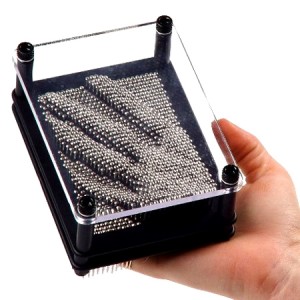
The tongue’s concentration of nerves is more like the picture on the right; they are more concentrated so when the electric signals fire those pixels they are able to create a more specific “picture.”
Another reason to use the tongue for the placement of this arrangement of electrodes is that the saliva produces in the mouth a great conductor for the electrical signals. This is a big advantage to using the tongue to other high densely-packed nerve area on the body, such as the fingertips.
There is hope for this technology to be used not just for people who are legally blind from birth, but also those that have suffered from glaucoma and macular degeneration.
One of the cool success stories has been for rock-climber Eric Weihenmayer, who completely lost his vision at age 13 due to retinoschisis, a condition where cysts form in the retinal tissue.
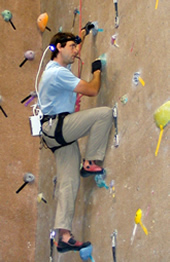

An avid active person and climber before BrainPort, (he even has climbed Mt. Everest!) Weihenmayer describes using BrainPort as unique because he gets to experience “how to climb like a sighted person.”
